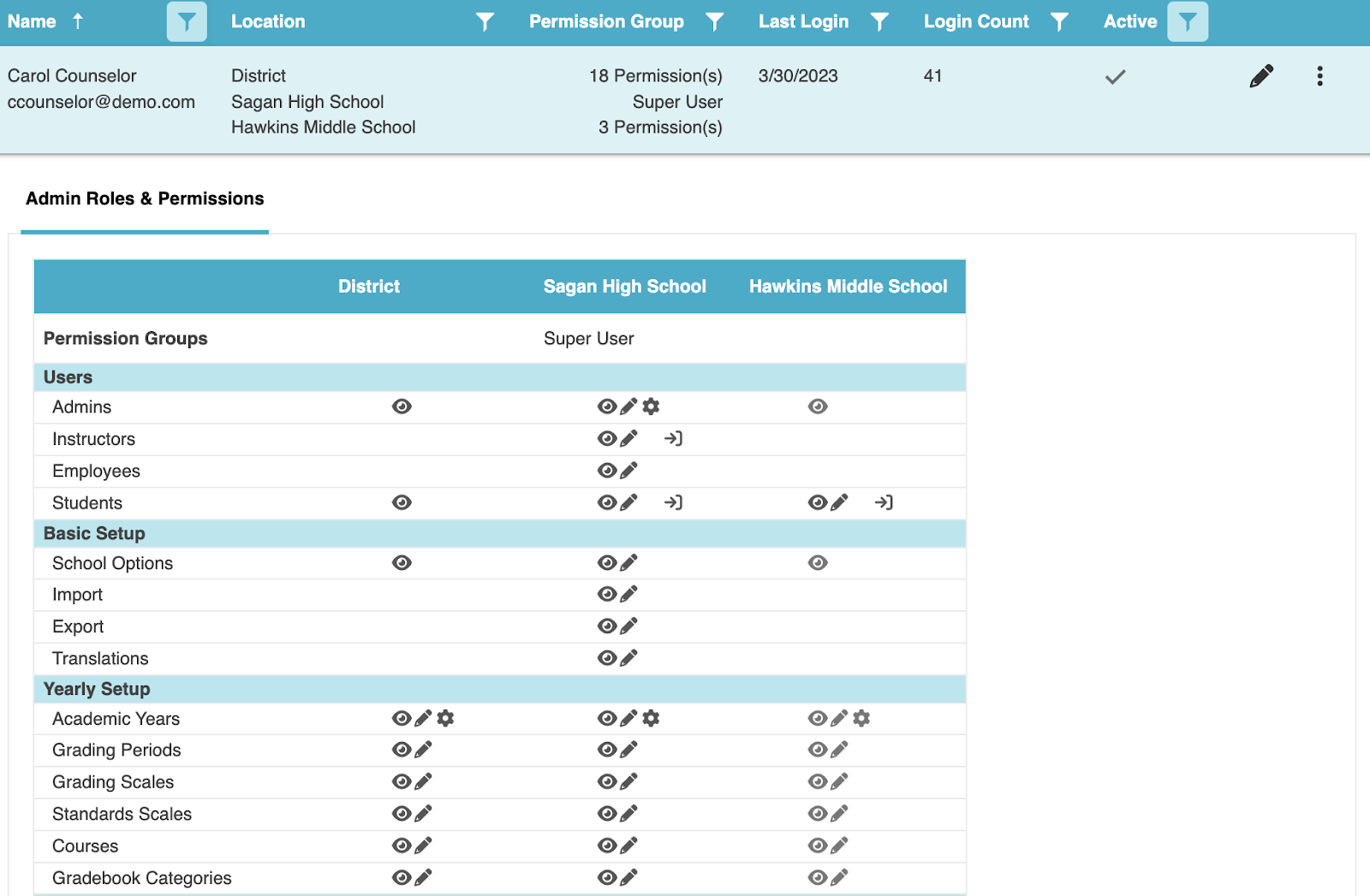District Admin Permissions
6/16/2023
Our system has long supported two levels of admin accounts: school admins and district admins. School admins have a rich set of permissions to control information access. Historically, district admins were “Super Users” and could access all data. While this was fine for main technical contacts who managed the system, it was suboptimal for other district employees who only need access to one or two areas across multiple schools. In our latest release, we implemented permissions for district admins, and customers will be able to use the district admin role more broadly.
This functionality is currently in final stages of testing, and should be published over the weekend. When complete, we’ll post a message to @CGS_Status on Twitter.
Our first change is to create a unified page for viewing all admins (both district and school admins). This helps users understand and manage employees’ admin roles. It’s available at both district and school levels:
District Main > Admins
School Main > Admins

Employees can have admin roles at various locations. They can be an admin at the district and at multiple schools – each with different permissions. This better fits the structure of organizations.

There are many permissions in the system, so we added a detailed view to better understand admin access. Icons (eye for view, pencil for modify, gear for setup, etc) make visual scanning easier. Permissions are associated with each role (district or individual school), making it easy to configure each location.

School admins receive permissions for a single location, district admin permissions apply everywhere (at all schools). We use interactivity to communicate this concept to users. When you add a permission at the district, icons are inherited at the schools too (in a slightly lighter color).

The unified page makes it easy to add multiple school admin roles for an employee. This was a nagging limitation in our previous code, and it feels good to resolve it.

Since there are many permissions, configuration can be complex. Historically permission templates have supported permissions based on role. There would be templates for “Principal,” “Counselor,” “Lunch Staff,” etc. The downside was only one could be applied to each employee, forcing users to create additional templates when users work in several departments.
To solve this we expanded templates into “permission groups” and now support having multiple groups on each employee. Users can create groups for each task (scheduling, attendance, etc), and layer them on employees based on their roles. We also created smaller default groups to provide building blocks for permission sets. An admin could be configured with groups like “View Students,” “Discipline,” and “Communicate.” We expect customers will create their own groups too.

Historically we’ve offered “view” and “modify” admin permissions. Modify permissions were required to enter data (take attendance), but also granted access to setup (configure attendance codes). This caused trouble in larger organizations where setup is handled by a district admin who is separate from those completing daily tasks. To better reflect this structure we added “setup” permissions to modules, which control access to options and setup codes (e.g. - Attendance Codes for the Attendance Module).

On release all district admins will continue to have nearly all permissions. We’d suggest reviewing existing district admins’ permissions, and adjusting them down to a more restrictive set reflective of their jobs.
This was a big project, and we touched thousands of pages to implement the new permission structure. While we’re excited about the benefits these features provide, they’re also foundational to future development. In the coming months we plan to bring school codesets (attendance codes, fee accounts, discipline types, etc) to the district; making the district admin role more useful. They’ll be able to view and configure more school data – without using the “goto” link, and share codes across schools instead of creating duplicates. These projects have been running in parallel, and should start releasing soon.
We’re excited about this new functionality, and hope it’s helpful to users. Feel free to send us feedback as you start using it.
The Common Goal Team
